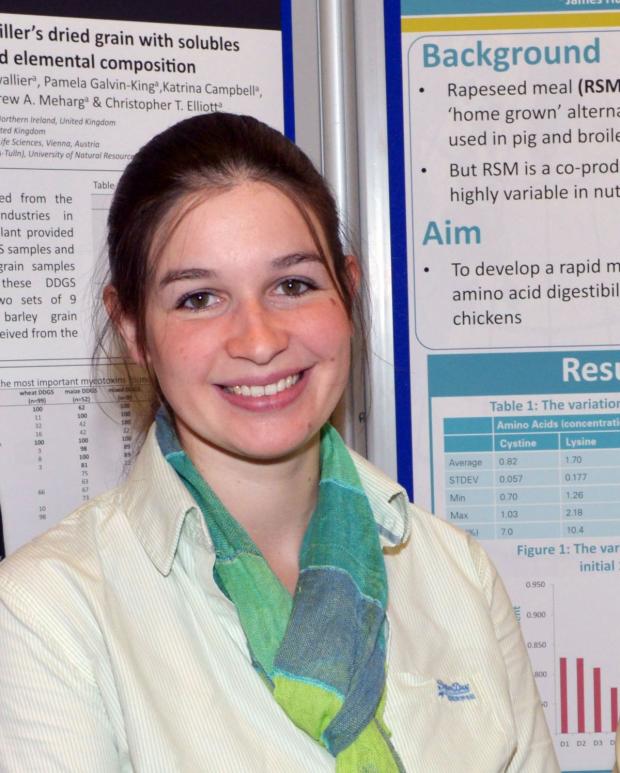Recent research at the Agri-Food and Bioscience Institute (AFBI) has found that sows can wean litter weights of over 115kg at 28 days of age and that pigs with low birth weights can have feed efficiency ratios under 2.4 during the finishing period.

In comparison, commercial litter outputs rarely exceed 105kg and the average feed efficiency of finishing pigs in Northern Ireland is approximately 2.7. The superior performance outputs achieved at AFBI were driven by a combination of nutrition and management and demonstrate the high potential that both sows and low birth weight pigs can achieve.
It is well known that, due to significant increases in litter sizes over recent years, piglet birth and wean weights have reduced. However, the weaning weight of a pig is a critical factor in determining its life time performance, and therefore a conflict in terms of productivity has arisen.

Aimee’s studies showed that, when a basal diet was offered, sows were able to produce a litter weight of 101 kg over a 28 d lactation. However, when a diet containing high energy and lysine was offered at the same intake level (7.5kg/day) sows were able to produce a litter weight of 112kg. Over the series of trials, the treatment that had the greatest average litter weaning weight (115 kg) was when sows were offered a diet containing 15.8 DE MJ/kg and 1.3% total lysine at an intake of 7 kg/d. The total litter weaning weight of 115kg represented a litter of 13 piglets weighing on average 8.8kg. The overall conclusion of the trials was that litter weight was mostly driven by sow feed intake (intakes of over 7 kg/d on average over a 28 day lactation). However when intake was low (6 kg), an increase in diet specification, increased energy and lysine contents, resulted in litter weaning weights above 100kg.
With regard to post weaning piglet management, two main rearing practices were compared. Small pigs (approximately 5.5kg) were allowed to either suckle the sow for an extra 3 weeks (i.e. weaned at 7 weeks of age), after which they were offered a commercial dietary regime. However, due to the 3 week delay in weaning, diet changes took place 3 weeks later than the comparator group which were weaned as normal at 4 weeks of age and offered the same commercial dietary regime. Key differences observed were that most of the mortality occurred in the extended suckled group before they were 10 weeks of age, but for the ‘normal’ group most of the mortality occurred in the finishing period. The extended suckled group also had superior finishing pig performance than the ‘normal’ group. As such, the economics of extended suckling and delayed dietary changes was better by £5.40 per pig than the practice of weaning small pigs at 4 weeks and offering a special starter diet regime. The adoption of such a practice is however difficult to manage in an ‘all in/all out’ situation.
In conclusion, offering lactating sows a high energy and lysine diet at an intake of 7.5 kg per day will drive superior litter performance. The estimated value of this extra performance is at least £1m for the Northern Ireland pig industry. Improving the environment of the farrowing house to encourage high feed intakes will also improve piglet weaning weight. Furthermore, there could be economic advantages associated with offering small pigs at weaning (< 6kg) extended suckling coupled with lifetime dietary changes which match weight development. Further work is required to establish the risk of adopting such practices on disease transfer between batches.
Latest news
- AFBI issues Nematodirus warning – Spring 2025 11 April 2025
- Managing Nature Based Risks to the UK Economy and Opportunities for Green Finance 08 April 2025
- AFBI Hillsborough host AERA committee 27 March 2025
- The Omics Days Conference 27 March 2025
